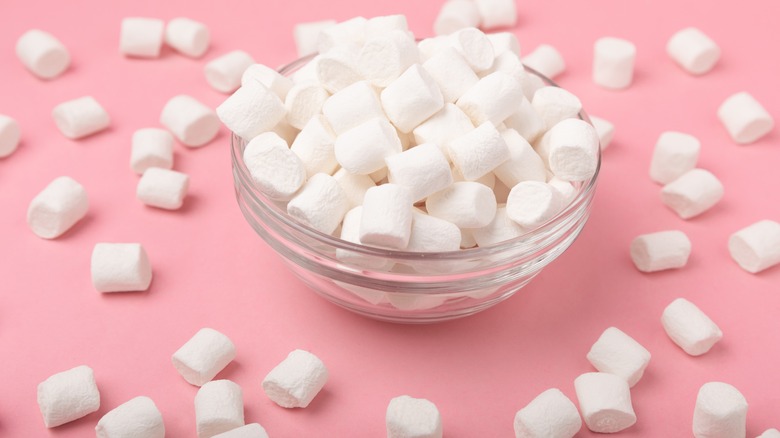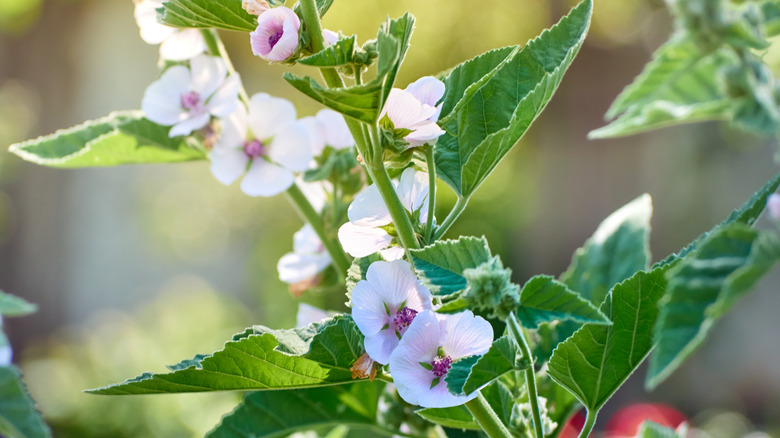The Plant Marshmallows Were Originally Made From
Marshmallows get their name from a plant, and that's a bit surprising. When you look at this white, fluffy candy, you don't often associate it with leafy greens. That lack of association is actually rather fair in the modern age, though, since marshmallows are no longer commonly made with their namesake plant (via National Confectioners Association).
Nowadays, marshmallow recipes include corn syrup, gelatin, sugar, and water, per Food Network. Extra ingredients are also sometimes added for coloring or flavoring. Marshmallows are a stable structure with enough rigidity to trap air bubbles inside and refrain from collapsing. Gelatin is animal collagen, but there are vegetarian and vegan marshmallows that use agar (seaweed gelatin) instead — they're just a little less fluffy.
Marshmallows are frequently eaten as is, but many recipes use them melted, and there's also toasted marshmallow. Marshmallows are primarily consumed by Americans, in the fall, per the NCA. These treats are used in autumn holidays like Halloween and Thanksgiving, or even early-winter ones like Christmas. However, the confections are regularly roasted around campfires throughout the summer, too.
The first record of s'mores is in the 1927 Girl Scout Handbook. This timing makes sense, as marshmallows were introduced to the U.S. in the early 1900s after their modern recipe was invented. Then they became popular in the '50s as manufacturing processes were improved. Prior to the 20th century, however, marshmallows had a long, plant-based history.
The marshmallow plant
The marshmallow plant, scientifically known as Althaea officinalis, is native to North Africa and western Europe, according to Gardening Know How — it's also native to parts of Asia, per the Spruce. Marshmallow is a tall, white and pink flowering plant with green leaves and stem.
With "mallow" in the name, it's not too surprising the plant can sometimes be confused with common and tree mallows, but they're not the same. The "marsh" part of their moniker is a bit more telling, because the plant does indeed like marshy, moist soil.
Meanwhile, the marshmallow plant's scientific name points towards its historic use by humans, according to Gardening Know How. "Althaea" is derived from a Greek word that means "healer," since marshmallows have long been employed in folk medicine (their slimy sap was used to soothingly coat the digestive tract).
For just as long, people have eaten the plant. Ancient Greeks and Romans boiled it and ate it as a veggie. Ancient Egypt even began mixing marshmallow sap with honey and nuts, then served it to royalty, 4,000 years ago (via National Confectioners Association).
In the 19th century, the French discovered marshmallow for themselves, per the NCA, and whipped its sap into a confectionary state. The result was deliciously sweet, but the process was done by hand and took too much time.
So, that's why the search for a new recipe began. Thus, modified cornstarch was used and gelatin replaced mallow root. As a result, the marshmallow plant was largely forgotten.

